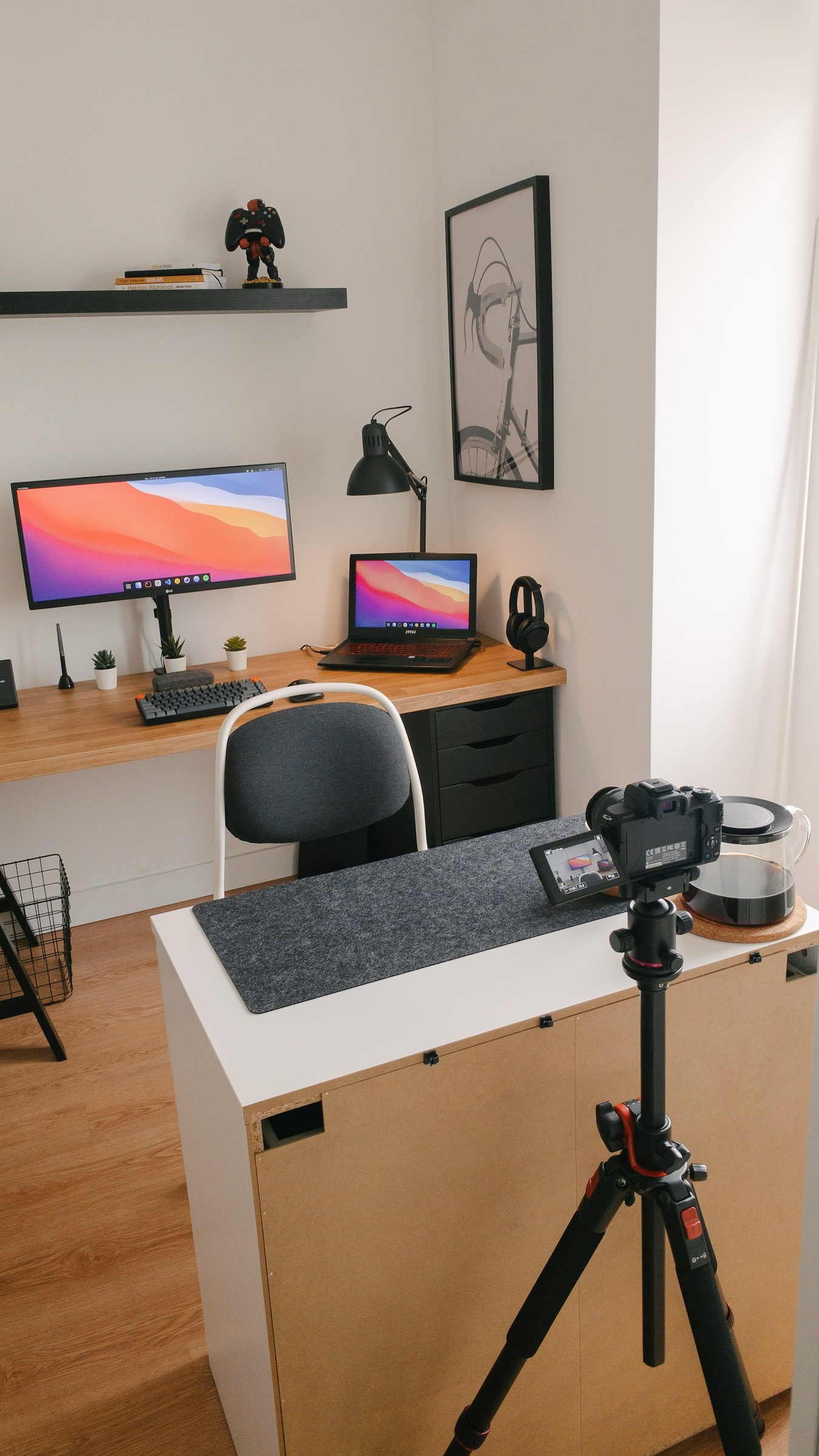11 Ways To Repurpose YouTube Videos (+ Free Tools To Help!)
Boost your exposure and work smarter by repurposing your long-form videos. We’ve listed 11 ideas to repurpose your content, including free tools to help!

Long-form videos usually require a lot of work to put together. From research to filming and editing, YouTubers often report spending entire days or even weeks working on a single project.
With most of the research, scriptwriting, and editing already done, repurposing your long-form videos is a no-brainer. You’ll end up with way more content (and therefore more opportunities for exposure) without that much extra work.
If you aren’t sure how to repurpose your content, or want to know how to do it most efficiently, keep reading. Below, we share 11 ways to repurpose your long-form videos, plus free tools that will make the task quicker and easier than you might imagine.
Blogs and articles
Turning a long-form video into a blog or article is not only easy to do – there are lots of benefits of doing so:
- Increased accessibility: Not everyone has the time to watch a full video, and some may not want to watch it with the sound on. A written version allows your audience to take in the information at their own pace, or search for keywords within the content to find something quickly.
- Increased shareability: Written content can be shared more easily than video content, as it can be quoted or linked within another article. Shares are effectively free advertising, so you should make it as easy as possible for your audience to do so!
- Great for SEO: Optimising your article with keywords relevant to your niche can help new audiences find your content through Google search. This is especially useful if you have your own website or business.
How to repurpose a video into a blog or article
If you’ve written a script for your video, you can easily repurpose that by adding formal structure like headings, bullet points and paragraphs. You could also add various images, GIFs, or infographics throughout to provide light relief from all the text.
If you didn’t write a script before filming your video, you can use free tools like Otter.ai or Sonix.ai to transcribe your video into text automatically. Once you have the transcription, you can tidy things up by structuring the article with headings and images etc.
When your blog is ready, you can post it on a dedicated blogging site like Medium or on your own website.
Pro tip: If getting views on your YouTube video is still your main priority, you can embed the video link at the beginning or end of your article e.g. “Want to see this in action? Watch this video instead!”
Make Pinterest pins
Pinterest is an underrated marketing tool that can work wonders for people in creative niches e.g. arts and crafts, cooking, and home renovations. It’s also super easy to use and repost your content.
How to repurpose your YouTube videos for Pinterest
To boost your video exposure using Pinterest, create attractive pins (graphics) and include a link to your YouTube video in the description. You can use your YouTube thumbnail as the pin image, or create a new graphic using Canva. Canva has hundreds of easily customisable Pinterest pins templates – many of which are free to use!
You can also save pins directly from your YouTube video’s URL, and Pinterest will automatically generate a pin using your video’s thumbnail. You can then optimise your pin by using the right keywords in your title and description, and saving it to a relevant board e.g. painting ideas for kids, quick midweek dinner ideas, kitchen inspiration.
Pro tip: Switch to a Pinterest business account to access Pinterest Business Tools. Here, you can access SEO tools and analytics to help the right audience find your content.
Short-form videos
The most obvious way to repurpose your long-form YouTube videos is to create short snippets from their highlights or most important points and post them on social media. While the easiest option is to take a 30-second clip straight from your video and post it, this won’t yield the best results.
How to repurpose a long-form YouTube video into multiple short-form videos
To repurpose your long-form video into short-form content, choose moments from the video that provide the most entertainment or insight. These highlights will become individual focus points for your short-form videos, lasting around 30-60 seconds each.
A good hook should be your number one priority when making short-form content. Those first three seconds are your chance to convince viewers to stick around and watch the whole video – and they could be the difference between your content flopping or going viral. To give yourself the best chance of success, you should create a separate hook for each short-form video – something that adds context and a bit of drama to the clip.
How to structure a video for social media:
- Hook your audience in the first three seconds e.g. “You won’t believe what happened when I X…”, “Here’s the number one thing I did to beat my running personal best by 30% in one month”
- Main content e.g. insight, tip, reaction, list
- Call to action e.g. “Want to see more? Watch the full video on YouTube”
You should also try to make your video as entertaining and accessible as possible. Add captions so that people can still watch the video on mute, and use transitions and graphic overlays to keep the video dynamic and engaging.
We recommend using CapCut to take care of your short-form video edits. It’s available on both desktop and mobile, and the free version has all the functionality you need to repurpose your long-form videos into shorter clips for social media. It even has some really handy features like trending video templates and auto-captions, which automatically generate subtitles from your video’s audio or voiceover.
Where to post short-form videos
If maximum exposure is your goal, you should post your video on all the major social media platforms, i.e. TikTok, Instagram Reels, and YouTube Shorts. You can also post to LinkedIn if you feel that’s suitable for your niche. And don’t forget to add an interesting caption when posting, filling it with relevant keywords to help your audience find it! You can write your captions yourself, or get ChatGPT to help you out (although we do recommend adding your own personal touch to make it more authentic).
Podcasts
Podcasts can be a great way to repurpose your long-form videos, especially if visuals aren’t essential to your video topic.
How to repurpose your YouTube video into a podcast
One of the easiest ways to turn your video into a podcast is with a program like Descript, which transcribes and converts videos into podcasts using AI.
If you want a more budget-friendly option, you could ask ChatGPT to rework your video script into a podcast script and rerecord it. And if you didn’t use a video script, you can use the basic version of Otter.ai to transcribe your YouTube video for free.
Once your podcast is ready to publish, you can upload it to Spotify for free. Spotify for Creators is recommended as the best entry-level podcasting platform thanks to its beginner-friendliness and features that make podcasting accessible to everyone.
Online course
If your content is educational, you could consider repurposing your videos to create an online course. This is a great way to consolidate all your educational materials into one resource, and it could earn you a lot of passive income.
And if you think that launching an online course means providing live lessons or creating a load of PDF supporting documents, don’t worry. Many online courses are made up purely of videos, so launching yours really won’t take that much extra work!
How to repurpose your YouTube videos into an online course
When it comes to repurposing your content for an online course, you have two options:
- Include the full videos as they are, but arrange them in a way that makes the most sense for the learner’s end goal.
- Break down your long-form videos into smaller, more digestible lessons (some online course videos are less than 5 minutes long!).
For more in-depth advice on creating your course, you can read our guide on How To Create An Online Course In 7 Steps.
Where to post your online course
Once your course is ready, you can launch it on a dedicated online course platform such as Teachable, Kajabi, or Thinkific. These platforms will require some degree of extra work in terms of marketing and management.
Alternatively, if you want the quickest, easiest, and most hands-free option, publish your course on a marketplace like Udemy or Skillshare. These platforms will market your course to a very large audience, but typically have some downsides (like taking a bigger cut of revenue).
There are lots of online course platforms out there, so we recommend doing a bit of research to see which best suits your needs.
6. Carousel posts
Carousel posts are a great way to repurpose your long-form content. And rumour has it that TikTok is boosting carousel posts in a bid to overtake Instagram, so it’s a great opportunity for more exposure!
How to repurpose your YouTube video into a carousel post
To repurpose your video into a carousel, create a separate graphic or image for each of the video’s key points, and overlay them with text. Here are some examples of carousel posts for different kinds of YouTube videos:
Tutorials: Take screenshots of your video at different stages, and overlay the images with a small amount of text to explain each step. Be sure to start your carousel with the finished result and add some context so that people can know what to expect e.g. “A step-by-step guide to making sourdough.”
Video essays: Use stock images or infographics to highlight or explain a key part of your video. For example, you could unpack statistics or highlight study findings discussed in your video.
Listicles: Use screenshots or stock images to take your audience through your video listicle in carousel form e.g. “The 10 most expensive movie scenes in history.”
When creating your carousel post, don’t forget to promote your video in the slides and caption e.g. “Watch the full video on my YouTube channel – link in bio!”. Once it’s ready, post it on social media sites like TikTok and Instagram for maximum exposure!
Canva is a great tool for putting your carousel posts together, and it has thousands of customisable carousel templates to choose from!
7. Reddit posts
Posting on relevant subreddits or Reddit threads can work wonders for your exposure. You can post your video directly in a subreddit, repurpose it into a text or image post, or comment on other people’s questions to position yourself as an expert.
Most Reddit subreddits have strict rules when it comes to self-promotion – be sure to check these before posting your video to prevent your post from being removed!
8. Quora
Another great way to boost your video’s exposure is to reply to questions on Quora that are related to your video topic. You can even include a link to your video in your answer!
9. Text posts
Repurposing your video content into text posts is quick and easy.
How to repurpose your video into text posts
Much like creating an article or carousel, you can summarise your video in a few words, or choose one point to highlight. If you have a video script, you could upload it to ChatGPT and ask it to propose a few ideas for converting it into text posts.
There are a few options for where you can publish your text posts, such as X, Facebook Groups, Threads, Reddit, or LinkedIn. Each platform has its own character limit, so keep that in mind as you may need to publish your post as a thread.
If you do plan on posting on the likes of X and Threads, you may find a platform like Typefully helpful. Typefully can automatically split long text posts into multiple tweets to keep them within the character limit.
When creating your text post, don’t forget to start with a hook to provide context and let people know what to expect! Here’s a recommended structure for your text posts:
- Hook e.g. “7 business ideas you can start for under £1000”
- Key insights (breaking down your main points or list)
- Call to action e.g. “Want to see more? Watch the full video…”
Pro tip: add engagement prompts like polls to your text posts for better engagement rates for hardly any extra effort!
10. Infographics
Infographics are very shareable and saveable, meaning they’re far more likely to go viral than a regular social media post! If you’ve shared any facts, figures or lists in your video, that’s the perfect opportunity to repurpose that content into an infographic!
How to create infographics
There are a few options to choose from when it comes to creating infographics. Both Canva and PiktoChart have plenty of customisable infographic templates to choose from. Canva is best for creating simple, social-media-friendly infographics, whereas PiktoChart is more sophisticated and can handle more complex statistics and data visualisation.
There are lots of places to share your infographics, including Pinterest, social media, Reddit, blogs, and even in your next video!
11. Email newsletter
If you have a mailing list, you could send out a recap of your YouTube video, summarising its key takeaways and sharing a link to the full video to get more views.
How to create your email newsletter
Kit is a great platform for creating your email newsletters, and its free plan includes access to some basic email templates to help you get started. To repurpose your video into an email newsletter, consider highlighting some key points or insights from the content. You can do this manually or ask ChatGPT to provide some suggestions based on your video script. Be sure to end the email with a call to action and a link to the full video to get more views!


